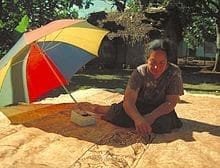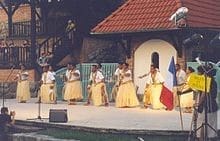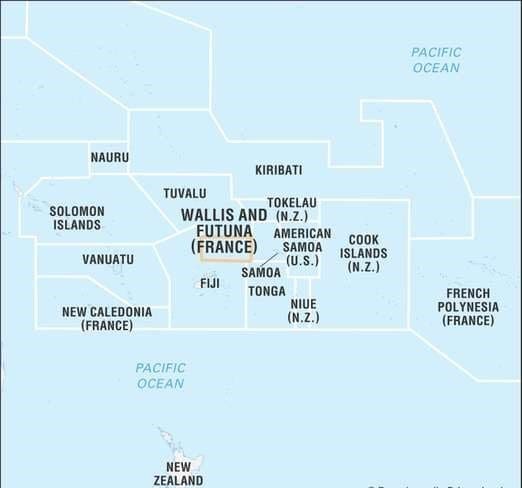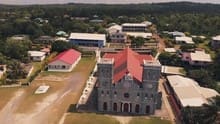Wallis and Futuna, in full Territory of the Wallis and Futuna Islands, French Territoire des Îles Wallis et Futuna, self-governing overseas collectivity of France consisting of two island groups in the west-central Pacific Ocean. The collectivity is geographically part of western Polynesia. It includes the Wallis Islands (Uvea and surrounding islets) and the Horne Islands (Futuna and Alofi). The capital is Matâ’utu, on Uvea.
Culture
The culture of Wallis and Futuna is Polynesian, and is very similar to the cultures of its neighbouring nations Samoa and Tonga. The Wallisian and Futunan cultures share very similar components in language, dance, cuisine and modes of celebration.
Fishing and agriculture are the traditional occupations and most people live in traditional fale houses in an oval shape made of thatch. Kava, as with many Polynesian islands, is a popular beverage brewed in the two islands, and is a traditional offering in rituals. Highly detailed tapa cloth art is a specialty of Wallis and Futuna.
Languages
At the 2018 census, among the population whose age was 14 and older, 59.1% of people reported that the language they spoke the most at home was Wallisian (down from 60.2% at the 2008 census), 27.9% reported Futunan (down from 29.9% in 2008), and 12.7% reported French (up from 9.7% in 2008).
On Wallis Island, the languages most spoken at home were Wallisian (82.2%, down from 86.1% in 2008), French (15.6%, up from 12.1% in 2008), and Futunan (1.9%, up from 1.5% in 2008). On Futuna, the languages most spoken at home were Futunan (94.5%, down from 94.9% in 2008), French (5.3%, up from 4.2% in 2008), and Wallisian (0.2%, down from 0.8% in 2008).

Religion
The overwhelming majority (99%) of the people in Wallis and Futuna are Roman Catholics, served by their own Roman Catholic Diocese of Wallis and Futuna, with see at Mata-Utu, a suffragan of the Metropolitan Archdiocese of Nouméa (New Caledonia).
Fashion
Traditional dress is worn for special occasions. It consists of light clothing to prevent overheating from the temperatures as well as many bright colors. The kava bowl and tapa cloth are important symbols of both cultures. Kava is drunk both ritually and secularly in Futuna.
The kava bowl is used to honor chiefs and the existing hierarchy. Tapa cloth is made by women for exchange at rituals that draw extended families together. It is symbolic of women’s wealth, along with specially scented oil. Tapa is also sold to tourists. Food gifts are symbols of welcome and good will. The malae, or meeting ground, is a place where people gather to honor their chiefs (kings in Futuna).
The Lomipeau canoe represents the ties between Wallis/’Uvea and the early maritime empire of Tonga of four hundred years ago. It also symbolizes the strong seagoing tradition of these people, particularly their journeys to Tonga, Samoa, and other islands.
Art
Tapas is a popular art form which is made from the “base” of the bark of the mulberry and breadfruit trees. The pounded bark is painted with vegetable colours and with attractive designs. It provides employment to about 300 people in almost every village, and from which many families have been economically benefited in the two islands. This art form is in great demand in the Pacific, in the Noumea and Tahiti.
Another art form is making of mats and necklaces with straw and shells. Efforts to further promote this vocation to export goods beyond the islands to Europe and France has faced problems of high transportation costs.

Painting on a tapa sheet
Music
The music of Wallis and Futuna is mainly Polynesian. Idiophones and aerophones are used exclusively; examples of these include slit-gongs (lali), stamping tubes, sticks, rolled mats (fala), sounding boards (lolongo papa), body percussion, Jew’s harps (utete), flutes, shell trumpets, and leaf oboes.
Festivals and dance
Numerous festivals are celebrated in Wallis and Futuna throughout the year; on St Chanel Day, pigs are roasted and placed in the sun, and dancing performances are held. The Wallis and Futuna Festival is put on in Noumea annually. Flae fones are community feasting and meeting structures.
Known for their sword dance, the people of Wallis and Futuna are stated to be “excellent dancers”. There are at least 16 types of dances (faive), their differences based upon location, occasion, number of dancers, gender, accompanying instruments, and other modifiers.
Most dances are accompanied by singing and some type of percussion instruments as dancing without drumming is considered unusual. The kailao (paddle-club dance), however, has no song and only includes percussion. Wallis and Futuna dancers perform across the Oceania region at festivals.

Roasted pigs of Wallis and Futuna on St. Chanel Day

Dancers from Wallis and Futuna performing the ‘Plantation’
Article by- Sneha Savla








